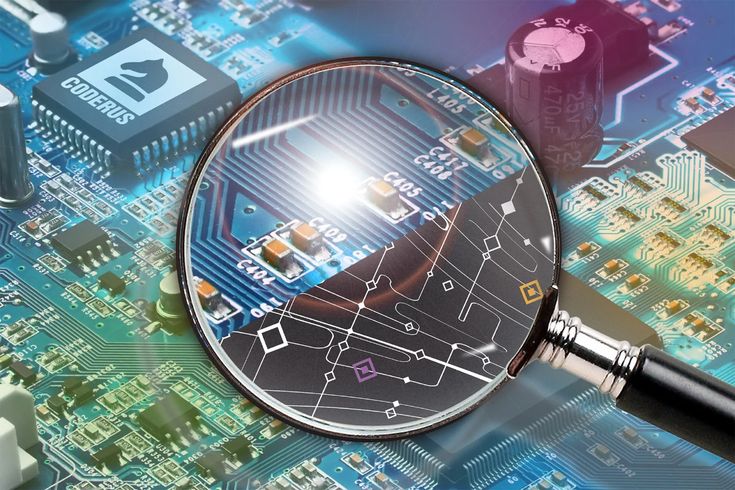Embedded systems are everywhere—from smartwatches and washing machines to automobiles and industrial robots. They power the devices that quietly drive modern life. If you’re interested in building intelligent devices that interact with the real world, working with embedded systems can lead to a highly rewarding and impactful career.
But what does it actually take to work in this field?
In this blog, we’ll break down the skills, knowledge, tools, and qualifications needed to pursue a career in embedded systems.
What Is an Embedded System?
An embedded system is a specialized computer system designed to perform a specific function within a larger device. It includes a combination of hardware and software that is optimized for efficiency, reliability, and real-time performance.
Examples:
-
Microcontrollers in microwave ovens
-
Engine control units in cars
-
IoT sensors in smart homes
-
Medical devices like pacemakers
1. Educational Qualifications
Most embedded systems engineers have a background in one of the following fields:
-
Electronics and Communication Engineering
-
Computer Science or Engineering
-
Electrical Engineering
-
Mechatronics or Instrumentation
While a bachelor’s degree is generally sufficient for entry-level roles, a master’s degree can help in research and advanced design roles.
2. Core Knowledge Areas
To work effectively with embedded systems, you need a strong understanding of the following topics:
a. Digital Electronics and Microcontrollers
-
Logic gates, flip-flops, ADC/DAC
-
Architecture of microcontrollers (e.g., ARM Cortex, AVR, PIC)
b. Computer Architecture
-
Memory hierarchy, registers, buses
-
Instruction sets and assembly language
c. Embedded C Programming
-
Bitwise operations, memory management
-
Interrupt handling, timers, and I/O interfacing
d. Real-Time Operating Systems (RTOS)
-
Task scheduling, semaphores, queues
-
Concepts of real-time deadlines and priorities
e. Communication Protocols
-
UART, SPI, I2C for hardware communication
-
Ethernet, CAN, and Modbus in industrial applications
-
Wireless protocols like Bluetooth, Zigbee, and Wi-Fi (for IoT)
3. Essential Skills for Embedded Systems Engineers
✅ Programming Skills
-
C and C++ are must-know languages in embedded systems.
-
Python is useful for scripting and automation.
-
Assembly language for low-level optimization.
✅ Hardware Interfacing
-
Interfacing sensors, actuators, and peripherals.
-
Reading datasheets and configuring GPIOs.
✅ Debugging and Troubleshooting
-
Using tools like oscilloscopes, logic analyzers, and multimeters.
-
Mastery of IDEs and debuggers like Keil, MPLAB, or STM32CubeIDE.
✅ Problem-Solving and Optimization
-
Designing systems with limited memory, speed, or power.
-
Writing efficient code with minimal resource usage.
4. Familiarity with Development Tools and Platforms
-
Microcontrollers & Boards: Arduino, STM32, Raspberry Pi (for prototyping), ESP32
-
RTOS Platforms: FreeRTOS, Zephyr, VxWorks
-
Simulation Tools: Proteus, Multisim, MATLAB/Simulink
-
Version Control: Git
5. Soft Skills and Domain Knowledge
-
Analytical thinking: Understand how devices work and troubleshoot issues.
-
Attention to detail: Embedded systems demand precision.
-
Team collaboration: Engineers often work with hardware, software, and testing teams.
-
Project documentation and version control
Also, domain-specific knowledge in fields like automotive, medical electronics, or industrial automation can be a big advantage.
6. Certifications and Courses (Optional but Helpful)
-
Embedded Systems Courses (e.g., Coursera, Udemy, edX)
-
ARM Accredited Engineer (AAE)
-
IoT and Embedded Systems Specializations
-
Online platforms like NPTEL and MIT OpenCourseWare
These can help you get started or advance your skills with hands-on projects and industry-relevant knowledge.
7. Build Projects and a Portfolio
To truly stand out, build your own embedded systems projects such as:
-
A home automation system
-
A weather monitoring station
-
A digital dashboard for vehicles
Showcasing these projects on GitHub, personal websites, or in interviews proves your practical knowledge and passion.
Final Thoughts
Working with embedded systems requires a solid blend of hardware understanding and software skills. It’s a field that rewards curiosity, innovation, and technical depth.

